Fairy Tales & Fables Part 1: Little Red Riding Hood, The Three Billy Goats Gruff, & The Three Little Pigs
There are so many reasons for parents to read fairy tales and fables to young

In the autism world, there is perhaps nothing more stock footage than a young child with an alphabet obsession.
It's easy to understand why this happens; alphabet-theming is ubiquitous. Visuals, auditory input, tactile input, and other multi-sensory and social-emotional experiences tied to the ABCs abound from day one: A loving parent rocking a baby to sleep while singing the ABC song; a musical mobile swaying over an infant's head with letters painted on it; those first wooden letter blocks that a child uses to teethe and stack and watch things fall; alphabet board books; and more and more and more.
When my twins were first diagnosed with autism at age 2, my son Harry spent hours stimming with a box of Melissa & Doug wooden alphabet magnets. I was fearful and unequipped back then, but I did understand it on some level. The ordered nature of the alphabet soothed him. I could see that.
Kids need to be flexible, but they also deserve to develop their individual passions and find solace in what feels good and safe.
We've learned how to leverage Harry's love for letters. My wife Janet asks him if he wants "K is for Kix or C is for Cheerios?" to smoothly transition through the morning routine. And, of course, I have used his love of the ABCs to develop an interest in books.
I couldn't have been luckier with Harry's first major obsession. There are so many good alphabet books out there! Here are 12 very different picks that will appeal to a variety of kids.
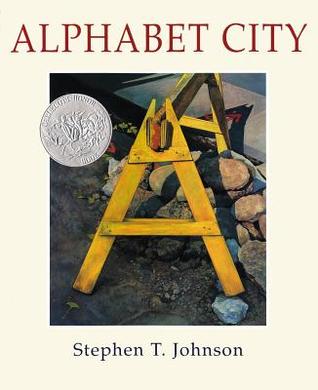
Viking Books for Young Readers (1995); hardcover, $17.99 USD

Photo-realistic oil paintings of urban scenes invite kids to find the shapes of letters in the world around them. My son Harry often points out the "U" in the curve of a playground swing, so I knew he'd like this concept. Both my sons enjoyed Alphabet City, but their interest waned when a letter was particularly hard to find—and a few of the images are tricky.

This book wouldn't work as well for a kids from the suburbs or a small town or rural community. But we live in Manhattan's Hell's Kitchen, home of zig-zagging fire escapes on the sides of buildings that might look like a "B" or a "Z," so I was able to easily generalize the book's examples to our neighborhood (and learn to play I Spy!).
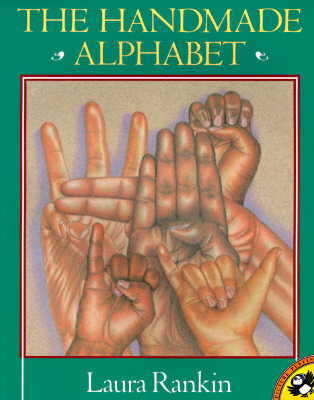
Puffin Books (1996); paperback, $6.99 USD

Like many kids with autism, my son Luke is a very delayed speaker. He said his first word ("mama," thank you very much) on time, but didn't make much progress after that and remains fairly low-verbal. So, like many parents struggling to communicate with children with expressive and receptive delays, I turned to American Sign Language.
(Sidenote: Despite some myths that persist, the evidence is quite clear that sign language does not delay verbal speech—and may in fact encourage it. See the National Academy of Science's 2001 report Educating Children with Autism)
Lots of kids with ASD are able to enjoy books more when they move their bodies or have a motion to imitate. It's hard for Luke to attend to a book, but he gets a feeling of pride about his signing ability and enjoys the physical movement and interactivity. It's fun watching him light up when I read The Handmade Alphabet.
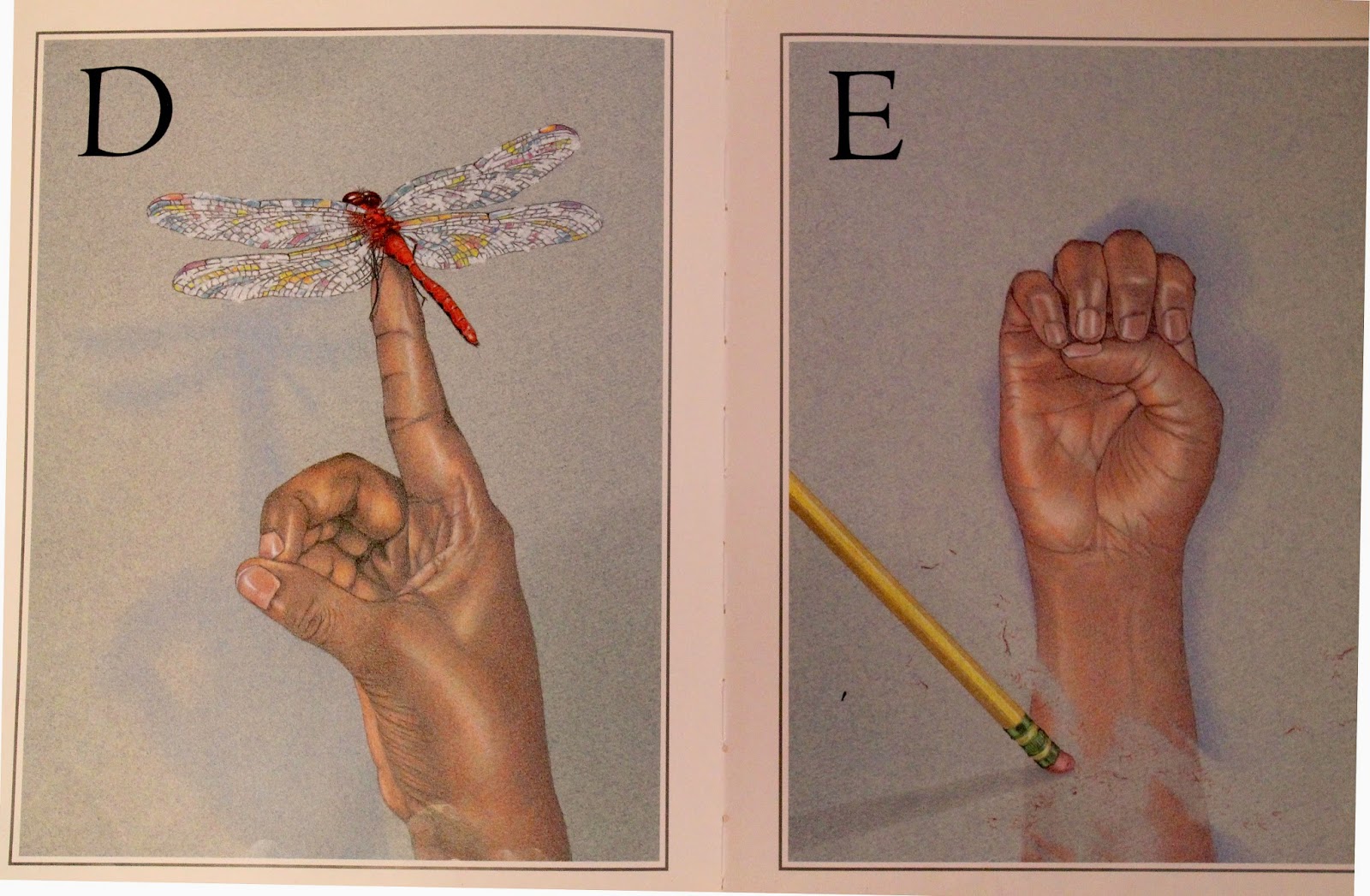
The illustrated hands are pretty and appropriately diverse in age, gender expression, and skin color. Each page features an ASL sign for a letter with the hand holding something or doing something that begins with that letter too. The "A" hand clutches an asparagus. The "B" hand is surrounded by bubbles. Etc. For the two letters whose signs require motion (J and Z) the action is drawn; so the "J" hand's pinkie swipes a taste of jam from a jar.
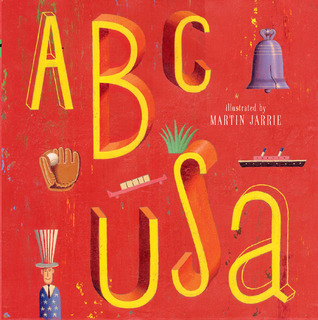
Sterling (2005); hardcover, $14.95 USD

Cultural fluency is important for socialization. So it's handy (for Americans) to have an ABC book that highlights the touchstones of (nostalgic) Americana. While ABC USA is a mixed bag in execution, an ABC-obsessed kid will be able to power through the weaker pages because of that familiar alphabet primer structure.
The book introduces some straight-forward things (baseball, jazz, the White House). Then there are are some trickier, but appropriately challenging pages for a motivated child (Kentucky Derby, Liberty Bell, immigrants). But there are some poor choices on the author's part that are too obscure (Zydeco) or require too much prior knowledge or more context that isn't shown in the illustration (Underground Railroad).
The folk-style art is quite aesthetically pleasing and makes thematic sense for the book, but it's not the most child-friendly. C is for cars, but my car-loving son Luke couldn't make out that's what they were!
It's a mixed bag, and for some this book won't work at all. But I'm happy we own it and will be reading it more as we approach the 4th of July.
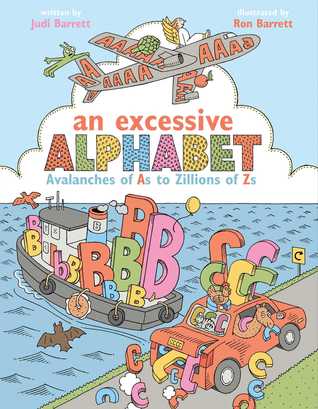
Atheneum/Caitlyn Dlouhy Books (2016); hardcover $17.99 USD

Judi and Ron Barrett are best known for Cloudy with a Chance of Meatballs. I reviewed their board book, Animals Should Definitely Not Wear Clothing, in an earlier post about funny books.
Each page of An Excessive Alphabet features a different collective noun or adjective that describes a type of grouping of letters. For instance, "Avalanches of As" is depicted as letter As (upper and lower case) falling down a mountain.
Mixed in are things that start with A. Some are the kinds of first words an ABA therapist or a speech therapist would be targeting for a child with emerging receptive or expressive language (ie. ant, airplane, or apple). Others are more advanced (ie. alien, anchor, or angel). No matter what level a child is at, there is something for almost any child to connect to.
This book is great practice for labeling, joint attention, turn-taking (you say what you see, they say what they see, etc.), and visual scanning practice. Scanning is an area of a lot of research buzz right now and it seems like we are still learning a lot about the gaze patterns of children with autism. I know for Luke and Harry, scanning a busy page is hard work.
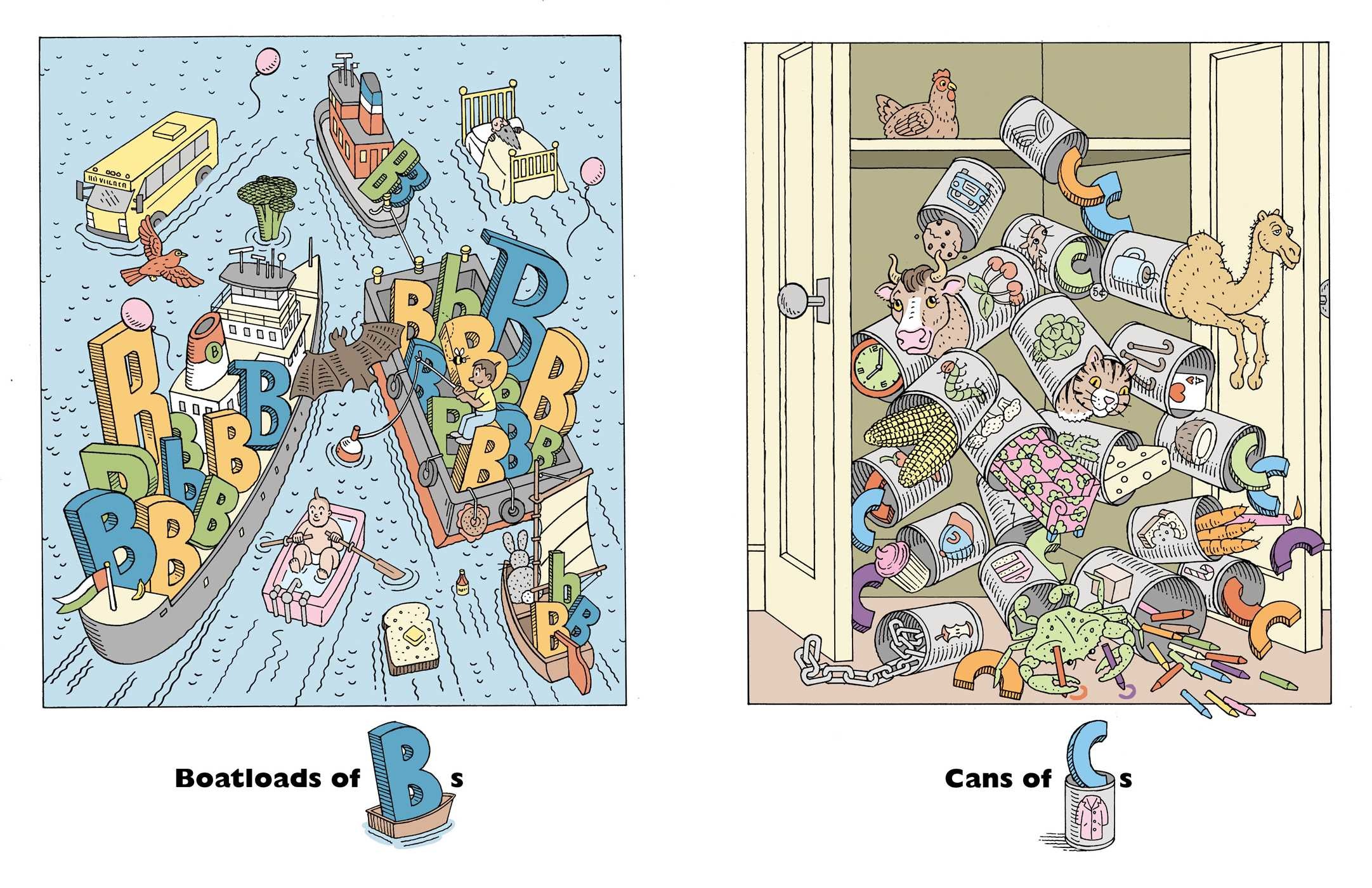
The scant text ("boatloads of," "cans of," "dozens of," "endless," "flocks," etc.) is all but completely lost on them for now; it's just a little too abstract. But I think with time, Ron Barrett's illustrations (and my repeated explanations) will help them learn these words too.
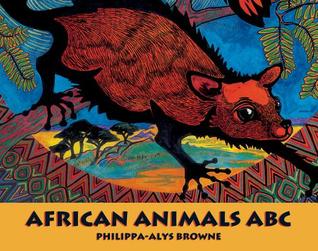
Barefoot Books (1995); paperback, out of print.

This title is sadly out of print, but I easily found it in the library and then used online.
There are tons of animal-themed ABC primers, but this is one of Harry's favorites—and as his other major obsession is animals, that is saying something. I think he loves it because the art is magnificent and unusual, and the animals are a perfect mix of familiar (crocodile, elephant, frog) and more exotic (jackal, vulture, warthog).
Each page has accompanying text describing the animal in action (ie. "crocodile snaps," or "warthog charges"), although I think sometimes the illustrations don't do enough to show action.
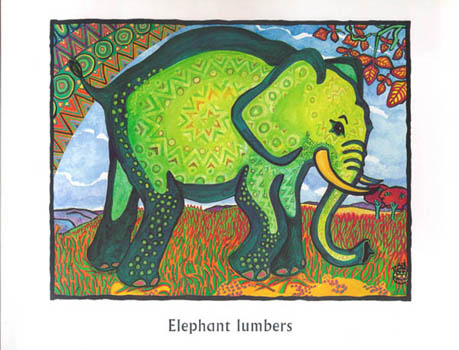
There is also something about the very bright, contrasting colors, patterns, and motion-suggesting lines that doesn't work for Luke at all. Luke can be hypersensitive to some "noisy" visual input. He will look at each page if I ask him to, and he will name the animal if he knows it, but he always looks away quickly and doesn't come to this book on his own.
Harry, however, is entranced and enjoys reading the book solo. In contrast to his twin, he is hyposensitive to noisy visual input, and although at times he stims with this book (moving it back and forth across his vision field while squinting), as long as he is also reading I think this is a good way for Harry to get the input he needs.
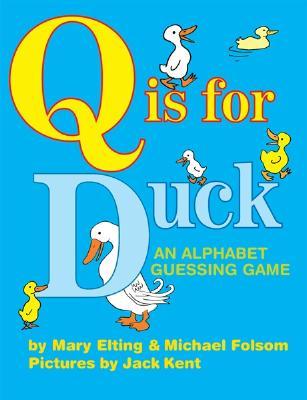
Clarion Books (2005); paperback, $6.95 USD

Let me begin by bragging that Harry asked his first why-question last week! I nearly fell over. And I will not hesitate in crediting this book with being a part of that.
I specifically bought Q is for Duck because I wanted to try to teach why. After flipping through it, I realized Harry had the necessary prerequisites for this book to be useful. But there are a lot of prerequisites, and my other son Luke isn't nearly ready to read this one yet.
I think that first a child needs to have mastered the idea that letters begin words like "D is for duck." Then, the child has to be able to actively point out when someone does this incorrectly ("Q is for duck"). Finally, the child needs some fluency in common animal sounds and action verbs. This will allow the child to get these jokes:
Q is for Duck. Why?
Because a Duck Quacks.
Or:
L is for Frog. Why?
Because a Frog Leaps.
Here's what it looks like in the book. Take note of the simple, clean comic illustrations:
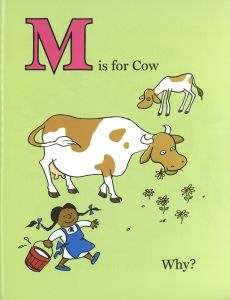
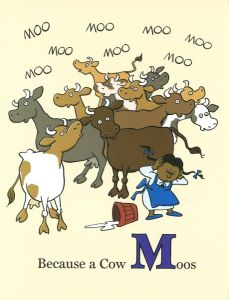
I'm showing these two sample pages side-by-side so you get the idea, but brilliantly the because page is actually the reverse side of the why page, so the child gets the opportunity to guess the reason. It's not always going to be something they are likely to figure out (N is for cat because it "naps," for example), but there are a lot of easy ones based on straightforward animal sounds and behaviors.
I'm thrilled with how quickly this book helped Harry generalize why. It's certainly a word a child will hear enough naturally, but this provides a clear structure for repetitive, errorless practice. The fact that it's a funny book sure doesn't hurt either!
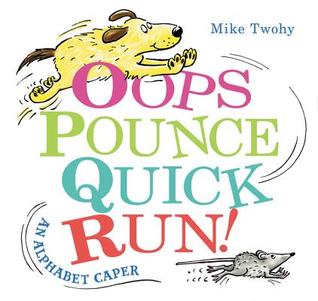
Balzer + Bray (2016); hardcover, $17.99

A mouse is asleep when a ball rolls into his mouse-hole. The ball belongs to a dog, so of course, an epic chase begins!
The spare, all-white background helps kids easily focus on the important elements of the story. One word appears on each page and the first letter of that word begins with the next letter in the alphabet. So our story goes (spoilers!): Asleep, Ball, Catch, Dog, Eye, Feet, Grrrr, Help!, I'll chase, Jump, Kitchen, Living Room, Missing, Nowhere, Oops, Pounce, Quick!, Run, Safe, To Dog, Unwrap, Very cool, Wag, XOXO, Yes!, Zzzz
I had to actively point out to Luke and Harry the alphabet pattern, but once I did, they enjoyed labeling the next letter and saying "F is for Feet", etc. as I read aloud.
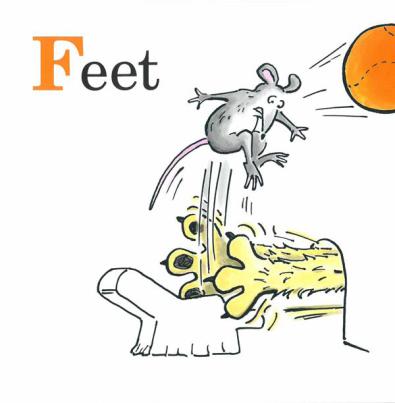
There is so little text that I find this book very useful for practicing novel story construction, using the language of cause and effect, and practicing sequencing. To do this, you have to try to engage the child in describing what is happening and what happens next.
This is a high-energy book and it helps tons if it is read with a lot of excitement for the action!
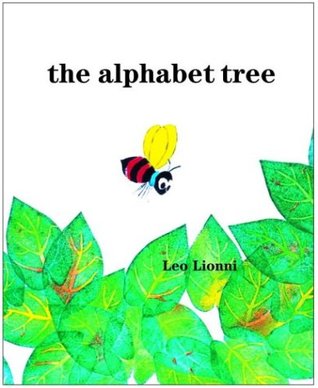
Knopf Books for Young Readers (1968); paperback, $5.99 USD

This is a perfect book for explaining what letters are for. The letters on the leaves of the alphabet tree are terrified after a strong wind scatters them, but then the word-bug teaches them how to combine to make words so when the wind returns they are stronger and can hold on. Then along comes a caterpillar who suggests that they combine into sentences and "mean something," and so they try that. They make sentences like "the wind is bad" and"the bug is small." Finally the caterpillar admonishes them to "say something important" and they spell out a message about peace on earth, climb on the caterpillar's back, and journey to take their message to the President.
Some people find The Alphabet Tree hokey, but I think it's exquisite—and (sadly) timely.
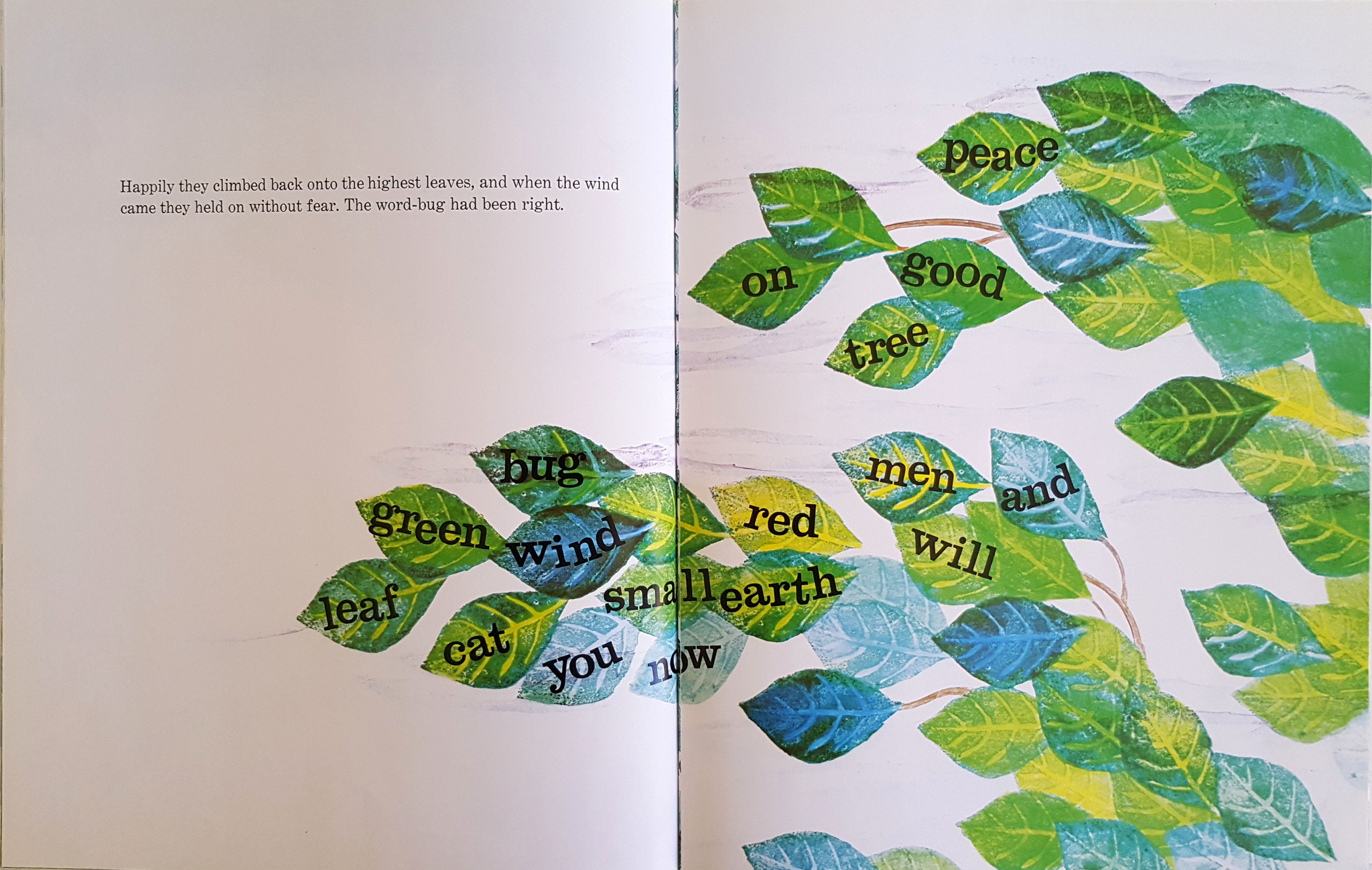
For a child obsessed with the alphabet, I like how The Alphabet Tree focuses on the function of letters (and words and sentences). It's useful for some kids to see individual letters out of order. Children who script are often very rigid about their scripts and this could be a concern with the alphabet. It's good to gain practice seeing individual letters all mixed up and represented as a flexible set of tools.
There is something very subtle and deliberate on Lionni's part in the description of the letters being afraid when they scatter in the wind. I think this emotional component may speak to some children's fears experiencing new academic challenges and it may perhaps connect with a child who is anxious about experiencing the alphabet in a non-ordered way.
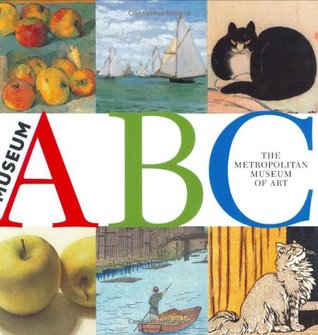
Little, Brown Books for Young Readers (2002); hardcover, $19.99 USD

My hatred for the ever-so-popular Mini Masters board book series is well documented, so I have continued to approach picture books purporting to impart an appreciation of fine art with serious trepidation.
So I was pleasantly surprised to discover Museum ABC, which scaffolds its art exposure premise in the alphabet. Each letter has a page and they each have four example works of art depicting one named thing beginning with that letter. So "C is for Cat" has four different paintings with a cat as subject.
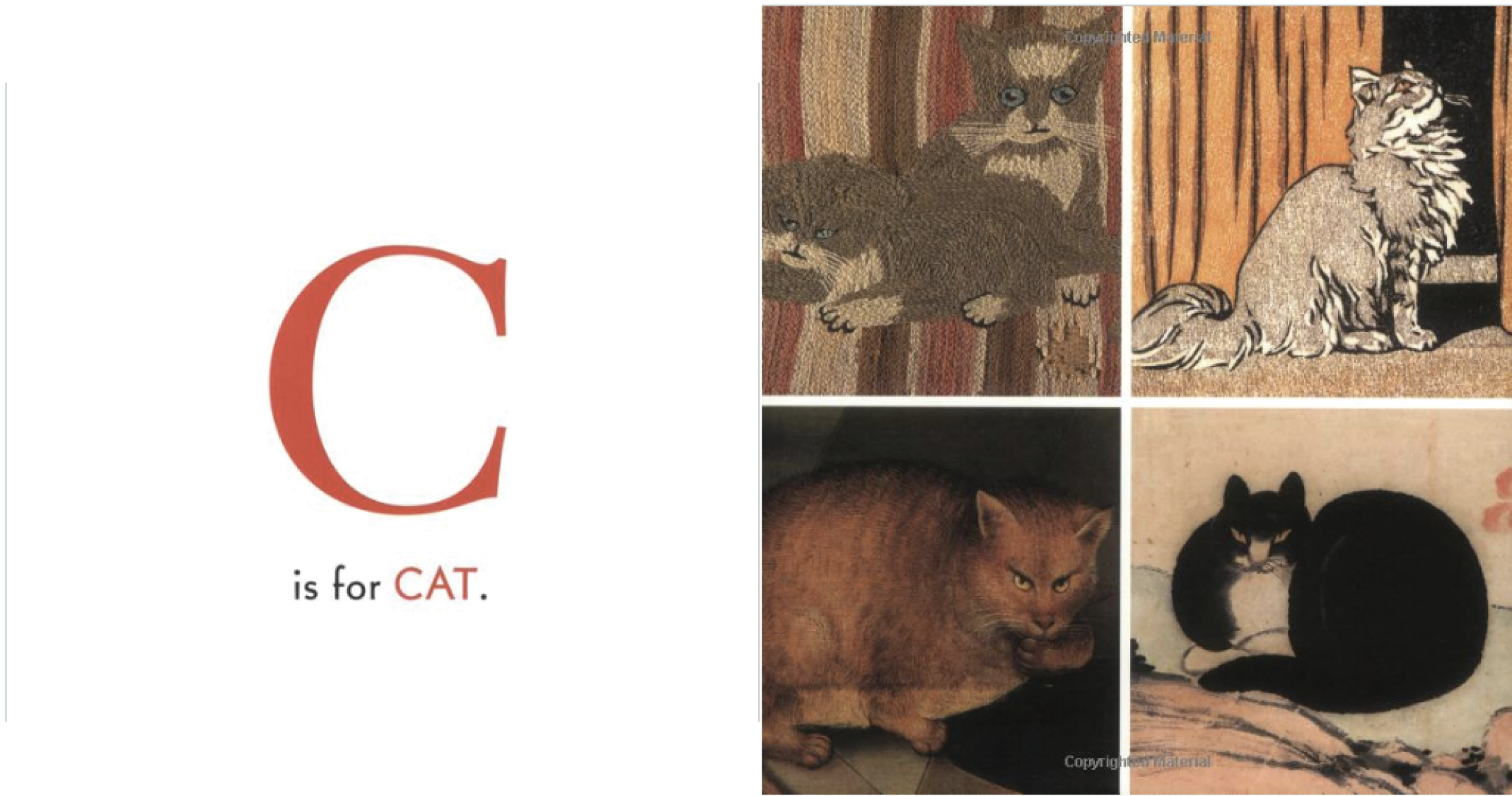
When a child is learning to label objects using discrete trial training (DTT), it is important that a word be represented by several exemplars so that the child generalizes the word. Otherwise, there is a risk the child will only learn how to correctly identify a word with a single image. Most of the early childhood vocabulary flashcard sets that you can buy on the market have photo flashcards, but not flashcards with illustrations or other art depicted, so there is a further danger that a child won't generalize what a "real" cat looks like to a drawing of a cat. It's really, really important that kids are able to identify things in art because they need that to best connect with picture books.
We didn't have Museum ABC when my children were in Early Intervention. But I can tell it would have been very useful. I like that the publishers chose to depict basic things (apple, boat, cat, etc.). This lines up well with therapy goals most low-verbal or nonverbal kids would begin with. I am using this book with my son Luke for maintenance (ie. practice with mastered skills to guard against regression), but I wish I'd had it when my boys were 2!
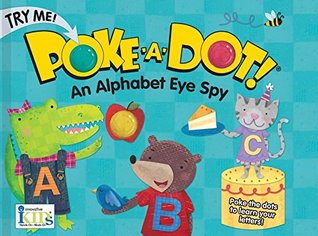
innovativeKids (2015); board book, $15.99 USD

There are tons of great sensory ABC books, but I decided to highlight Poke-a-Dot! An Alphabet Eye Spy because it is kind of unique in the mix of inputs a child can get from reading it. Basically, this book has virtually indestructible bubble wrap, and just like bubble wrap, when a child pushes in a bubble it provides satisfying resistance (pressure input), followed by a (reasonable volume) POP! sound. Turn the page and the bubbles you just popped are now in position to be popped again.
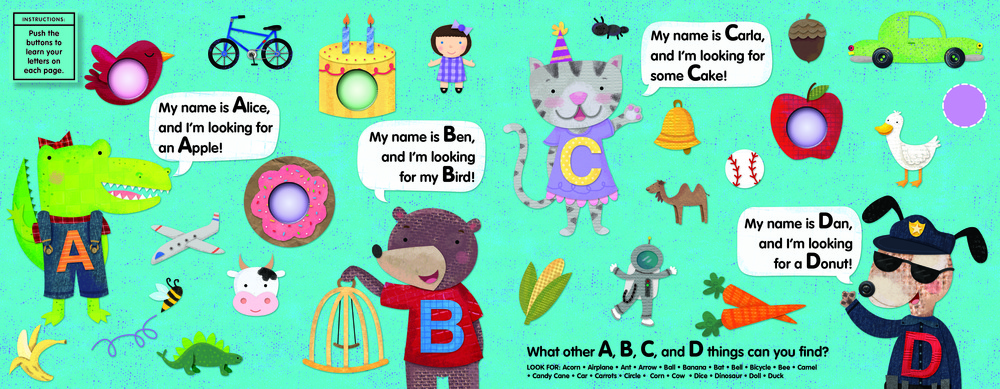
The gist of the book is that each letter is represented by a different character wearing a letter on their clothing. "My name is Alice and I'm looking for an Apple!" says an Alligator with an A on her overalls. So the child is instructed to find the object that Alice is looking for and then pop it.
This is really the essence of positive reinforcement for a sensory seeking child, and it makes this book ideal for a child who is working on following directions, letter sounds (there are other objects to find, mostly without bubbles), and that critical first skill taught early in ABA programs: pointing. I also like that the characters greet the children and say their names. That's good modeling for kids who have yet to master greeting.
One tricky thing: if a child misses popping a bubble on a facing page, then the next page won't work properly (because the bubble will be inverted). It's a good idea to help a child learn how this works so they don't get frustrated.
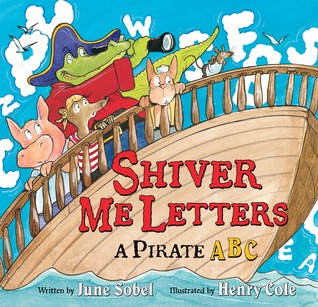
HMH Books for Young Readers (2006); paperback, $7.99 USD

This book is great for a pirate-lover or as a way to introduce pirates and the idea of a treasure hunt to kids. Animal pirates go sailing in search of all the letters of the alphabet. Kids get practice scanning as they look for the treasure!
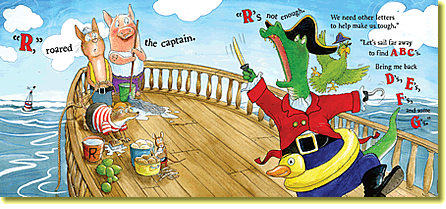
Shiver Me Letters makes great use of thematic elements; they find an anchor, a cannonball, gold, a map, and a sword, etc. I'm trying to pay some attention to introducing my kids to important children's themes, like pirates, so this is great for that kind of literary education.
However, some elements are a bit of a miss (they find B floating on a bay) and a few of the illustrations aren't well executed (the S-shaped sword is too subtle). But it's easy to hurry past the lesser moments because the rhyming verse is quick-paced and carries you along easily.
I am a huge fan of Sobel's writing. She is an expert in pulse and sound, and I like her choice to have each rhyme land on the the next letter of the alphabet. Because of this structure, Harry is able to predict what is coming (if he forgets where we are in the story). He announces each letter with a huge smile at precisely the right beat. This confidence-booster is fabulous for kids who like to be correct (Who doesn't?) and for those who really enjoy participating with fill-ins.
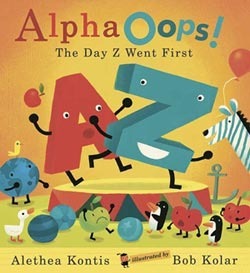
Candlewick (2012); paperback, $6.99 USD

Z is tired of always going last when the alphabet letters line up and put on a show. So instead, Z insists on going first and all the letters start to show up backwards. But soon, P shows up out of (reverse) order and it becomes a chaotic free-for-all.
What I like most about this is the chaos. This is another book that plays with the rigidity of the alphabet's order and it does so in a playful, humorous way. Still, a child who really wants to track what's going on can follow along the bottom of the page. The "new" order is indicated there as the book progresses.
The visual details are great, and my kids love labeling all the things that start with the various letters. But what sells me on this book is the sight of my kids laughing. Both of them really get the overall joke. Humor based on things being out of place is an important type of humor to get (it comes up a lot). It's nice to see how easily anxiety/rigidity can be funneled into laughter with a skilled writer and illustrator at the helm.
That said, I do skip over or heavily edit down a lot of the back-and-forth comic chatting between the letters as they discuss who's turn is next and why and how unusual this all is. These parts involve a large number of characters and are just too confusing for my kids to track.
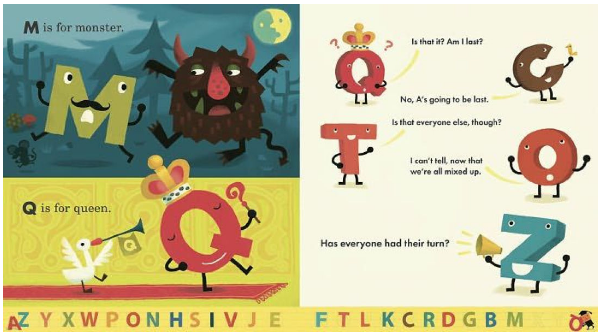
I didn't include books that I've previously covered on this blog for this post. Please read back in the archives if you want to learn more about two more great titles: I covered Chicka Chicka Boom Boom in my December 2016 post about silly books and Dr. Seuss's ABC: An Amazing Alphabet Book in another post over a year ago.